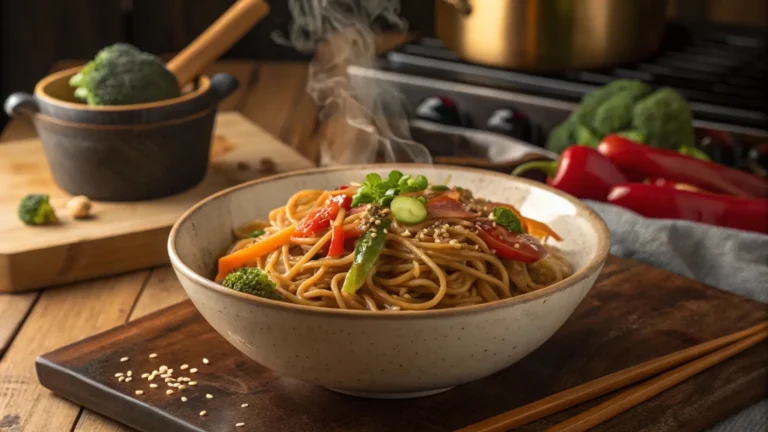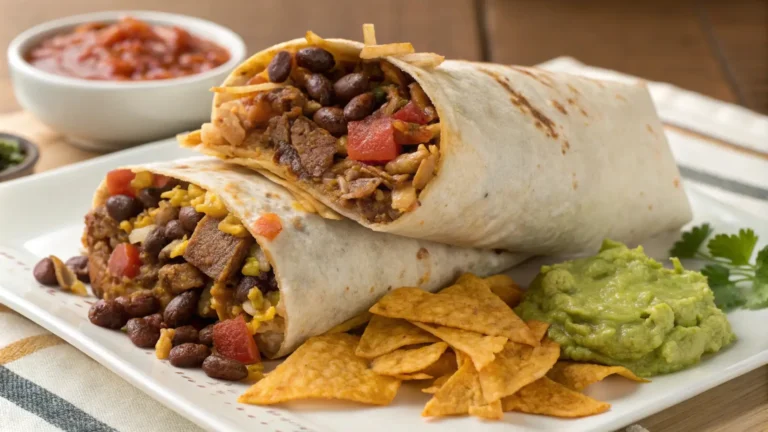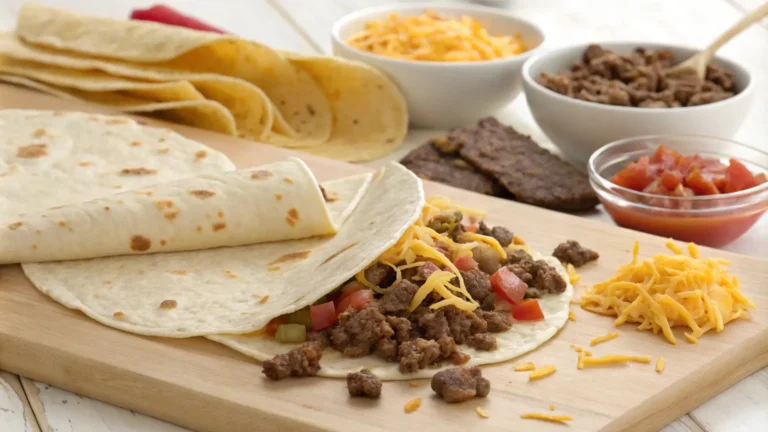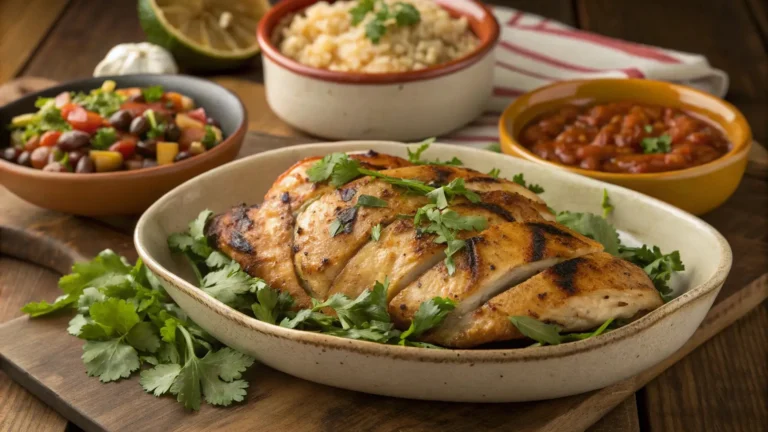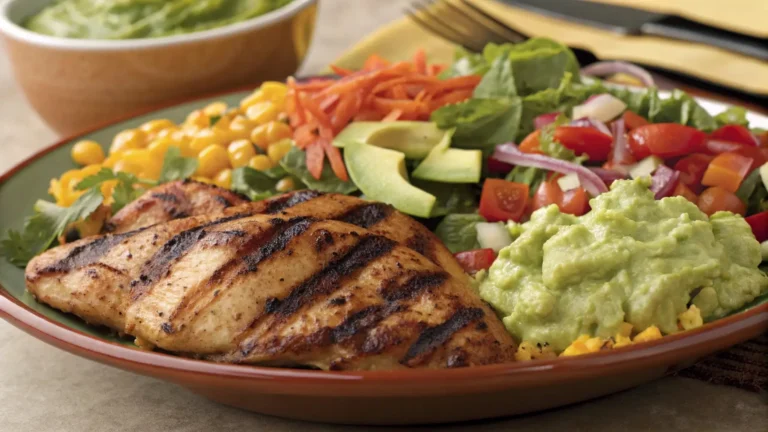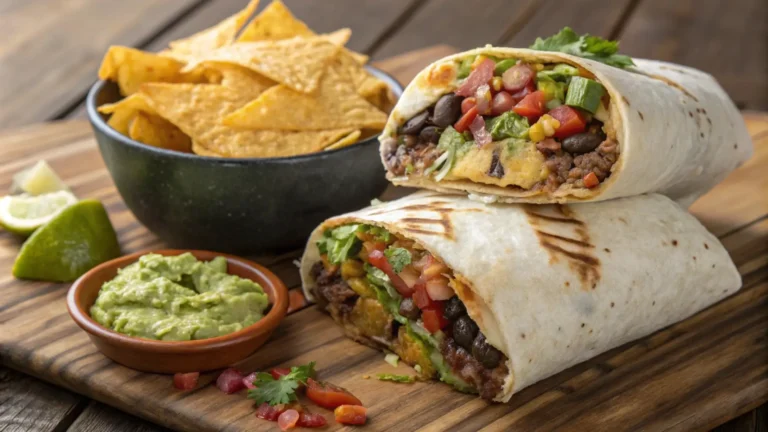Does Teriyaki Sauce Go On Before or After Cooking?
Teriyaki sauce is a culinary gem, beloved for its sweet, tangy, and slightly savory flavor profile. But when it comes to using it in cooking, many find themselves scratching their heads over a seemingly simple question: Does teriyaki sauce go on before or after cooking? This article dives deep into this topic, uncovering the best practices, techniques, and timing for using teriyaki sauce effectively. Whether you’re a home cook or a budding chef, this guide will answer your questions and help you master the art of cooking with teriyaki sauce.
Introduction to Teriyaki Sauce
What is Teriyaki Sauce?
Teriyaki sauce is a popular condiment with origins in Japanese cuisine. It’s made from a blend of soy sauce, sugar, mirin (sweet rice wine), and sake, though variations often include garlic, ginger, or honey to suit different palates. Known for its glossy texture and bold flavors, teriyaki sauce is a go-to choice for glazing, marinating, or finishing dishes. Its versatility makes it perfect for everything from chicken and beef to vegetables and noodles.
Origins and Traditional Uses
The term teriyaki stems from two Japanese words: “teri,” meaning a shine or luster, and “yaki,” which refers to grilling or broiling. Traditionally, teriyaki sauce is brushed onto meat or fish during cooking, giving it a signature glaze that’s as pleasing to the eyes as it is to the taste buds. In Japanese cuisine, teriyaki sauce is often used sparingly to enhance, not overpower, the natural flavors of the main ingredient.
Why is Cooking Timing Important?
Timing is everything in cooking, especially with teriyaki sauce. Since it contains a high sugar content, using it incorrectly can lead to burning or a lackluster dish. Applying it before cooking enhances marination, infusing the protein with flavor. Using it after cooking adds a glossy finish and ensures the sauce retains its rich, thick consistency. Balancing these approaches is the key to unlocking teriyaki’s full potential.
When to Add Teriyaki Sauce While Cooking
Applying Teriyaki Sauce Before Cooking
When it comes to using teriyaki sauce, marinating your ingredients before cooking can work wonders. This method allows the flavors to seep deeply into proteins like chicken, beef, or tofu, enhancing taste with every bite. However, timing is critical. Marinate for 30 minutes to a few hours, but avoid overdoing it—especially for delicate proteins like fish—as the high sodium content can toughen the texture.
For best results, remove excess sauce before grilling or pan-searing to prevent the sugars in the sauce from burning. This technique not only avoids a bitter taste but also ensures an even caramelization. Wondering “Does teriyaki sauce go on before or after cooking?” Using it before cooking as a marinade is excellent for building a foundational flavor base.
Adding Teriyaki Sauce After Cooking
Using teriyaki sauce after cooking delivers a rich, glossy finish to your dishes. This technique is particularly effective when the sauce acts as a glaze. Brush it over meats or vegetables in the final minutes of cooking, allowing the residual heat to thicken the sauce and create a shiny coating.
This approach works well for stir-fried vegetables, baked salmon, or even roasted chicken. It also preserves the sauce’s flavor integrity, as the sugars and seasonings won’t be overcooked. The next time you’re debating, “Does teriyaki sauce go on before or after cooking?” consider this method for achieving that signature sticky glaze.
Combining Both Approaches
Sometimes, combining both approaches yields the best results. Start by marinating your protein to build depth of flavor, then add teriyaki sauce as a finishing glaze. For example, marinate chicken thighs in teriyaki sauce, grill them, and brush on a final layer during the last few minutes of cooking. This two-step method creates a dish that’s flavorful inside and out.
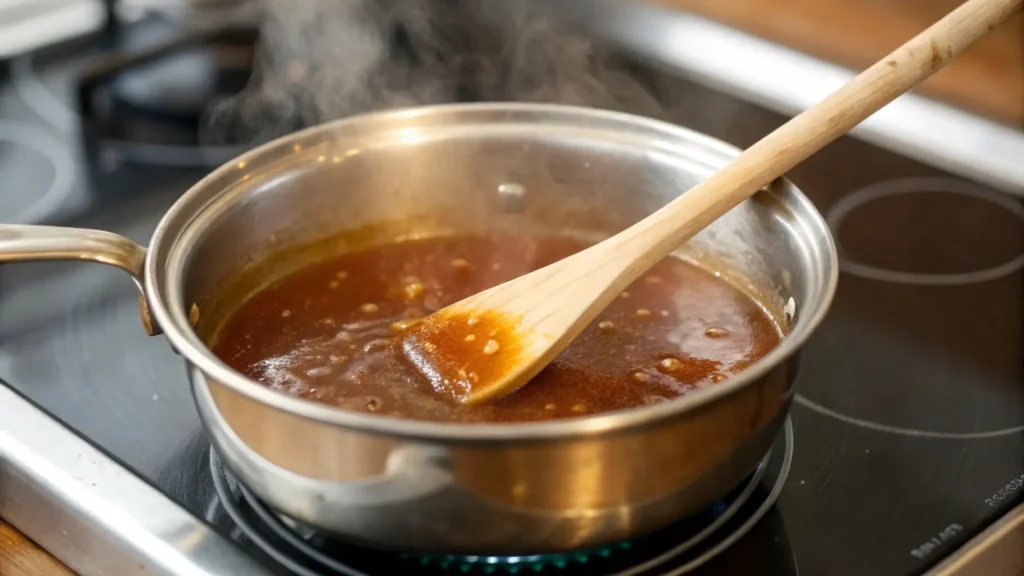
Techniques for Cooking with Teriyaki Sauce
As a Marinade
Using teriyaki sauce as a marinade is a classic choice. The mix of soy sauce, sugar, and mirin penetrates proteins, breaking down fibers to tenderize while delivering bold umami notes. To avoid burning, pat your meat dry before placing it on a hot grill or pan.
Marinating is perfect for proteins like chicken breasts, pork chops, or firm tofu. Add aromatics like garlic or ginger to your sauce for an extra punch. Not only does this answer “Does teriyaki sauce go on before or after cooking?”, but it also highlights the versatility of this method.
As a Glaze
When used as a glaze, teriyaki sauce truly shines—literally. Brush it onto your protein during the final 5 minutes of cooking for a caramelized finish. To thicken the sauce, simmer it with a slurry of cornstarch and water before application.
Glazing is ideal for baked salmon, roasted vegetables, or grilled chicken. The sugars in the sauce caramelize beautifully, creating a layer of flavor that sticks with every bite.
In Stir-Fry Dishes
In stir-fries, teriyaki sauce acts as both a cooking liquid and a flavoring agent. Add it during the final stages of cooking to coat your ingredients without overcooking the sauce. Pair it with fresh vegetables, noodles, or rice to create a quick, delicious meal.
For instance, toss bite-sized chicken pieces with teriyaki sauce after they’re fully cooked, then combine with stir-fried broccoli and bell peppers. This ensures the sauce retains its taste while perfectly complementing the dish.
Common Mistakes and How to Avoid Them
Over-Marinating and Over-Salting
One of the most common pitfalls when cooking with teriyaki sauce is over-marinating. While marination enhances flavor, letting your meat or vegetables sit too long in the sauce can result in an overly salty or mushy dish. Proteins like chicken and beef need no more than 2–4 hours to absorb the sauce, while delicate items like fish should marinate for 30 minutes to an hour.
To avoid this, stick to the recommended marination times and always taste your sauce beforehand to gauge its saltiness. When you’re asking yourself, “Does teriyaki sauce go on before or after cooking?”, remember that over-marinating isn’t the solution—it’s about balance.
Burning Sugar-Heavy Sauces
Teriyaki sauce is notorious for burning quickly because of its high sugar content. Applying the sauce too early during grilling or pan-searing can lead to a bitter, charred taste. To prevent this, remove excess sauce before cooking or brush it on during the last 5 minutes of cooking.
If you’re unsure, consider using the sauce primarily as a finishing glaze instead of a marinade. This way, you’ll maintain its flavor without risking burnt, sticky messes.
Balancing Sweetness and Savory Flavors
Teriyaki sauce can be overwhelmingly sweet if not balanced properly. Adding ingredients like fresh ginger, garlic, or a splash of rice vinegar can enhance the savory notes and create a more well-rounded flavor. Experiment with small adjustments to suit your taste preferences.
For more teriyaki-related ideas, check out Julia Tasty’s What Are Teriyaki Noodles Made Of? and What Goes Well with Chicken Teriyaki?.
Expert Tips for Perfect Teriyaki Dishes
Choosing the Right Ingredients for Sauce
A high-quality teriyaki sauce starts with the right ingredients. Opt for naturally brewed soy sauce for a deeper umami flavor, and use fresh ginger and garlic for an aromatic boost. If you’re making homemade teriyaki sauce, experiment with additions like honey, brown sugar, or sake for a personalized touch.
Store-bought sauces can save time, but check the label for additives or overly sweet formulations. A good rule of thumb? Simpler ingredient lists often mean better flavor.
Homemade vs. Store-Bought Options
While store-bought sauces are convenient, making your own teriyaki sauce gives you control over sweetness, saltiness, and thickness. Homemade versions are easy to prepare with pantry staples and can be customized to suit your dish. On the other hand, store-bought sauces are great for quick meals when time is limited.
Customizing Teriyaki Sauce for Different Cuisines
Teriyaki sauce isn’t just for Japanese dishes! Use it as a base for fusion recipes, such as teriyaki tacos or teriyaki-inspired BBQ. Adding chili flakes or sesame oil can give your sauce an exciting twist for global cuisines.
For more inspiration, explore Julia Tasty’s Teriyaki Chicken Noodles Recipe and elevate your cooking game.
FAQs About Teriyaki Sauce
Can Teriyaki Sauce Be Used as a Dipping Sauce?
Absolutely! Teriyaki sauce isn’t just for cooking; it makes an excellent dipping sauce for foods like chicken skewers, dumplings, or even roasted vegetables. To ensure it’s not too thick or overpowering, dilute the sauce slightly with water or broth. Adding a sprinkle of sesame seeds or chopped green onions can elevate the presentation.
When you’re wondering, “Does teriyaki sauce go on before or after cooking?”, remember that as a dipping sauce, it shines best when served separately, allowing guests to customize their flavor experience.
Is Teriyaki Sauce Healthy?
Teriyaki sauce can be a healthy addition to meals when used in moderation. It contains essential nutrients from ingredients like soy sauce and ginger, but its high sugar and sodium levels mean you should avoid overdoing it. For a healthier option, try making a low-sodium or sugar-free version at home using alternative sweeteners like honey or stevia.
How to Store and Preserve Teriyaki Sauce?
Homemade teriyaki sauce can be stored in an airtight container in the refrigerator for up to a week. For longer storage, consider freezing it in small portions. Store-bought sauces typically have preservatives, making them shelf-stable until opened. Always check the expiration date and keep the bottle refrigerated after opening.
Conclusion: Mastering Teriyaki Cooking
Teriyaki sauce is a versatile, flavorful addition to any kitchen. Whether you’re marinating, glazing, or dipping, knowing when to use the sauce can elevate your dishes. So, does teriyaki sauce go on before or after cooking? The answer lies in your desired outcome. Use it before cooking to infuse deep flavor or after cooking for a glossy, sticky finish.
Experiment with techniques, try homemade variations, and pair it with your favorite ingredients to create memorable meals. With these tips, mastering the art of cooking with teriyaki sauce is just a whisk away.

